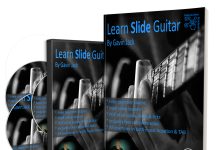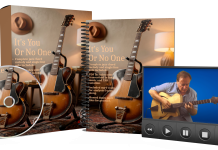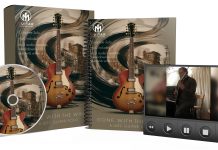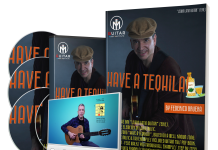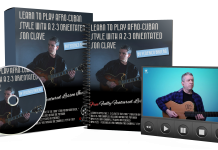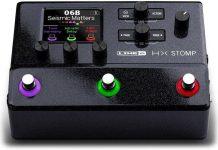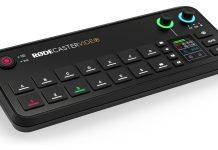This post may contain affiliate links. As an Amazon associate, Google associate as well as associate for other programs, Guitar & Music Institute may earn commissions from qualifying purchases.

Consistent and well-structured practice is the key to advancing your skills and achieving your musical goals. This article provides you with a solid foundation to build upon, ensuring that every practice session is productive and enjoyable. Whether you’re a beginner or a seasoned player, our comprehensive workout plan will help you make swift and lasting progress on your guitar journey.
The GMI Guitar Practice Workout
Have you ever wondered how some guitarists seem to improve at lightning speed while others plateau quickly? If so, you’re not alone. Making headway in your guitar playing depends heavily on regular and thoughtfully crafted practice routines. In this article, we aim to give you a roadmap for constructing the ultimate guitar practice workout that can help you achieve fast and sustained progress.
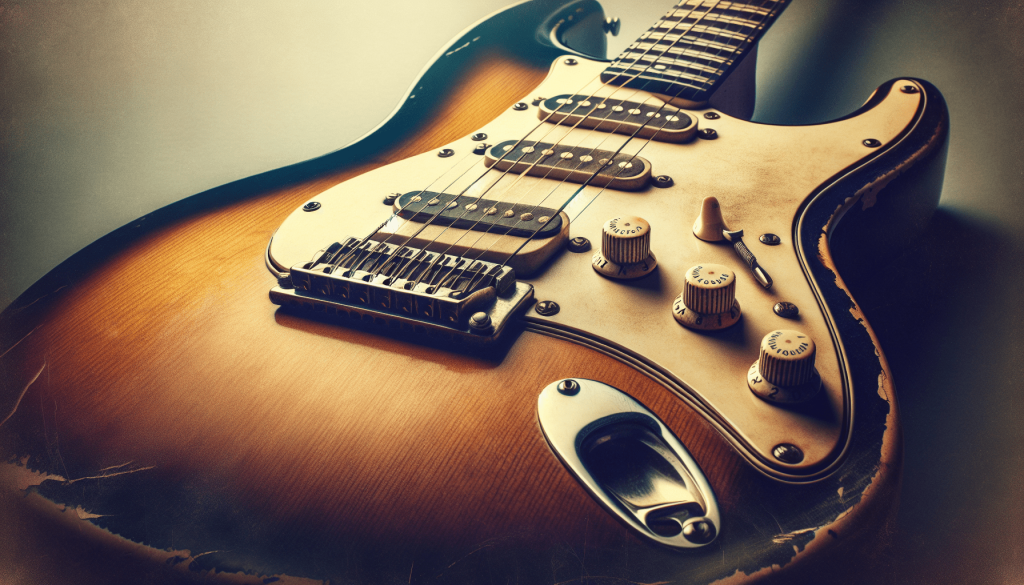
Why Regular Practice Matters
Consistency is key when it comes to mastering any instrument, and the guitar is no exception. Regular practice helps develop muscle memory, improves technique, and consolidates your learning. When you practice consistently, you’re more likely to retain what you’ve learned and build on it. That’s why a well-structured practice routine can be your best friend on your musical journey.
Building Muscle Memory
Muscle memory is the subconscious memory your muscles develop through repetitive practice. It’s what allows you to switch chords effortlessly, solo with precision, and maintain synchronization. By practicing regularly, you train your hands and fingers to remember these movements, making them second nature. Over time, you’ll find that you can play complex pieces with ease.
Improving Technique
Whether you’re aiming for speed, accuracy, or expressiveness, technique is crucial. A regular practice routine helps you focus on particular techniques, such as alternate picking, fingerpicking, or tapping. Consistent practice allows you to hone these skills incrementally, leading to powerful improvements over time.
Consolidating Learning
Practicing regularly helps you retain what you’ve learned. When you consistently review scales, chords, and songs, you reinforce this knowledge, making it easier to recall and apply in different contexts. This practice reinforces your foundation and makes it sturdier for more advanced concepts.
Crafting Your Ultimate Guitar Practice Workout
Creating an ultimate practice routine requires you to strike a balance between various elements. You’ll want to incorporate exercises that focus on technique, theory, and musicality. The goal is to cover all the bases so that you become a well-rounded guitarist.
Setting Goals
Before diving into any practice routine, knowing what you want to achieve is crucial. Set short-term and long-term goals. Your short-term goals could be learning a song or mastering a particular scale, while your long-term goals might include being able to improvise solos or perform at a gig.
Example:
| Goal Type | Example |
|---|---|
| Short-Term | Learn the C major scale fluently |
| Long-Term | Perform an entire setlist at a local open mic night |
Warm-Up Routine
Just like athletes, guitarists need to warm up before diving into intensive practice. A proper warm-up gets your fingers moving, improves blood flow, and helps prevent injuries.
Finger Exercises
Start with some simple finger stretches to ensure flexibility and reduce the risk of strain. Follow it up with finger exercises such as chromatic exercises up and down the fretboard.
- 1-2-3-4 finger exercise: Play each string one finger at a time (index on fret 1, middle on fret 2, ring on fret 3, pinky on fret 4) and move this pattern up and down the neck.
Scales and Arpeggios
Including scales and arpeggios in your routine is essential for building technique and understanding music theory. Start with the major and minor scales, and gradually move to more complex scales like the pentatonic and blues scales.
- Major Scale: Practice the C major scale across the neck, starting slowly and gradually increasing speed.
- Minor Scale: Do the same with the A minor scale.
Chords and Progressions
Understanding and practicing chords and progressions will help you with rhythm playing and song composition. Spend time on different chord shapes and practice common chord progressions.
Common Progressions:
| Progression Type | Example |
|---|---|
| I-IV-V | C – F – G |
| ii-V-I | Dm – G – C |
Technique-Focused Exercises
These exercises are designed to improve specific techniques like alternate picking, legato, or tapping. Focus on one or two techniques per practice session to not overwhelm yourself.
- Alternate Picking: Practice alternate picking on a single string, then add string transitions.
- Legato: Hammer-ons and pull-offs exercises to improve fluidity in playing.
Practice with a Metronome
Timing is crucial in music, and practicing with a metronome helps you develop a sense of timing and rhythm. Start slow and gradually increase the tempo as you become more comfortable.
- Set your metronome to a slow tempo (e.g., 60 BPM). Play a scale or exercise in time with the clicks.
- Gradually increase the tempo by 5 BPM as you get comfortable.
Learn and Play Songs
A vital part of your practice should be learning and playing songs. Choose songs that challenge you but are manageable. This practice not only builds your repertoire but also keeps your routine enjoyable.
- Choose songs with varying difficulty to keep things interesting.
- Break the song into sections and practice each section before putting it all together.
Improvisation
Improvisation helps you understand fretboard theory and improves your creativity. Spend some time jamming along with backing tracks or with a looper pedal.
- Use backing tracks in keys you’re comfortable with and explore different licks and phrases.
- Record your jam sessions to analyze and improve.
Ear Training
Having a good ear is as important as having good technique. Spend a few minutes each day on ear training exercises, such as identifying intervals, chords, and scales by ear.
- Use apps or online tools that focus on ear training.
- Practice singing intervals and simple melodies to improve your pitch recognition.
Cool Down
Ending your practice session with a cool-down routine is just as important as warming up. Gentle finger stretches and playing some easier, slow-tempo pieces can help relax your muscles and prevent any strain or injury.
Example Practice Routine
Here’s a sample workout you might follow. Feel free to customize it according to your needs and goals.
- Warm-Up (10 minutes)
- Finger stretches
- 1-2-3-4 Chromatic Exercise
- Scales and Arpeggios (15 minutes)
- C Major Scale
- A Minor Scale
- G Major Arpeggio
- Chords and Progressions (15 minutes)
- Practice open chords
- I-IV-V Progression (C – F – G)
- Technique (20 minutes)
- Alternate Picking
- Legato Exercises
- Metronome Practice (10 minutes)
- Playing scales or exercises in time
- Learn a Song (20 minutes)
- Work on sections of a chosen song
- Improvisation (15 minutes)
- Improvise over a backing track
- Ear Training (10 minutes)
- Intervals and chord recognition exercises
- Cool Down (5 minutes)
- Gentle finger stretches
- Play a simple, slow piece
By following this structure, you can ensure you cover all essential aspects of guitar playing in a balanced and efficient manner.
Customizing Your Workout
Every guitarist has unique strengths, weaknesses, and interests. Therefore, it’s essential to customize your practice routine based on your personal needs and goals. If you find certain exercises too easy or too difficult, adjust them accordingly. The most important thing is to keep challenging yourself without overwhelming yourself.
Identifying Strengths and Weaknesses
Take some time to identify your strengths and weaknesses as a guitarist. You might be great at fingerpicking but struggle with alternate picking. Or perhaps you’re fluent in major scales but not as comfortable with minor scales. Knowing these aspects will help you focus your practice time effectively.
Balancing Fun and Discipline
While disciplined, focused practice is crucial, it’s equally vital to keep your practice sessions enjoyable. Include songs you love and fun improvisation sessions. Balance out the technical exercises with musical applications to keep things interesting.
Record and Review
Recording your practice sessions can provide valuable feedback. Listen back to identify areas for improvement, celebrate your progress, and set new goals. This self-review mechanism can be an excellent motivator and a guide for future practice sessions.
- Use a simple audio recorder or your smartphone.
- Make notes on what you did well and what needs work.
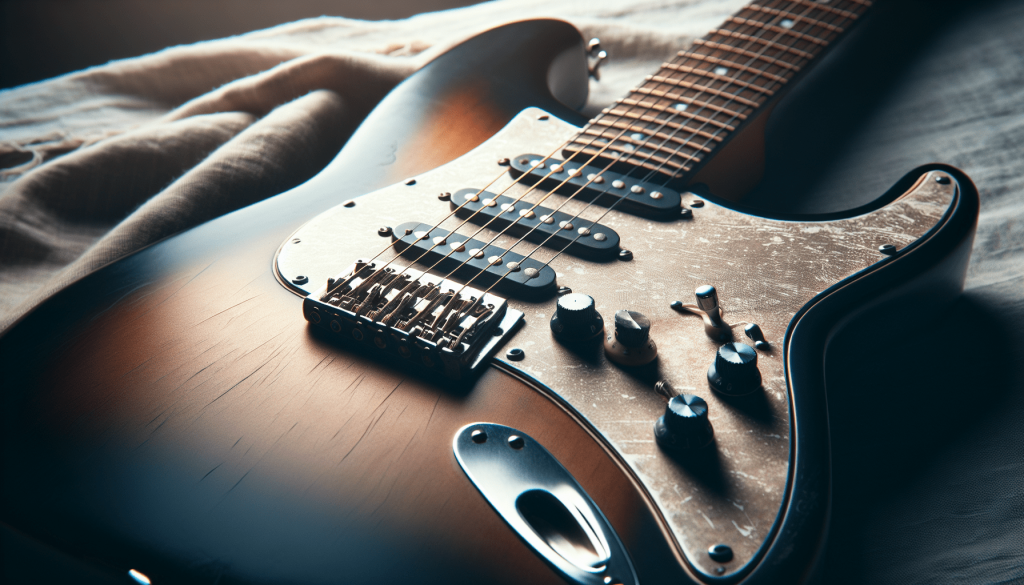
Tips for Effective Practice
Here are some additional tips to ensure your practice sessions are as productive and enjoyable as possible:
Set a Regular Schedule
Aim to practice at the same time every day. Consistency helps build a habit, making it easier to stick with your routine.
Start Slow
When learning new pieces or techniques, start slow. Speed will come with familiarity and muscle memory.
Stay Relaxed
Tension can lead to bad habits and even injury. Focus on staying relaxed, especially in your hands and shoulders.
Mix Things Up
Vary your routine to keep it interesting. Try new songs, different genres, or collaborate with other musicians.
Reward Yourself
Small rewards can boost your motivation. After completing a challenging practice session, treat yourself to something enjoyable.
Conclusion
Achieving fast and sustained progress in your guitar playing hinges on a consistent and well-rounded practice routine. The Ultimate Guitar Practice Workout we’ve shared provides a comprehensive guide to covering essential areas of musicianship. By setting clear goals, incorporating varied exercises, and balancing fun with discipline, you’ll be well on your way to becoming a proficient and versatile guitarist. So, grab your guitar and start crafting your practice routine today—you’ll be amazed at how quickly you improve!
Happy practicing!
You might be interested in enhancing your guitar skills further by exploring the fundamentals of music theory. Speaking of this, you may find the concept of music theory particularly beneficial, as it provides a framework for understanding how music works. Additionally, if you’re keen to improve your timing and rhythm, consider looking into the use of a metronome, an essential tool for any musician. Lastly, if you’re curious about the various techniques that can help you become a more versatile player, check out the article on guitar techniques that covers a range of skills from fingerpicking to strumming patterns. Each of these topics can greatly enhance your understanding and performance on the guitar!
This post may contain affiliate links. As an Amazon associate, Google associate as well as associate for other programs, Guitar & Music Institute may earn commissions from qualifying purchases.






